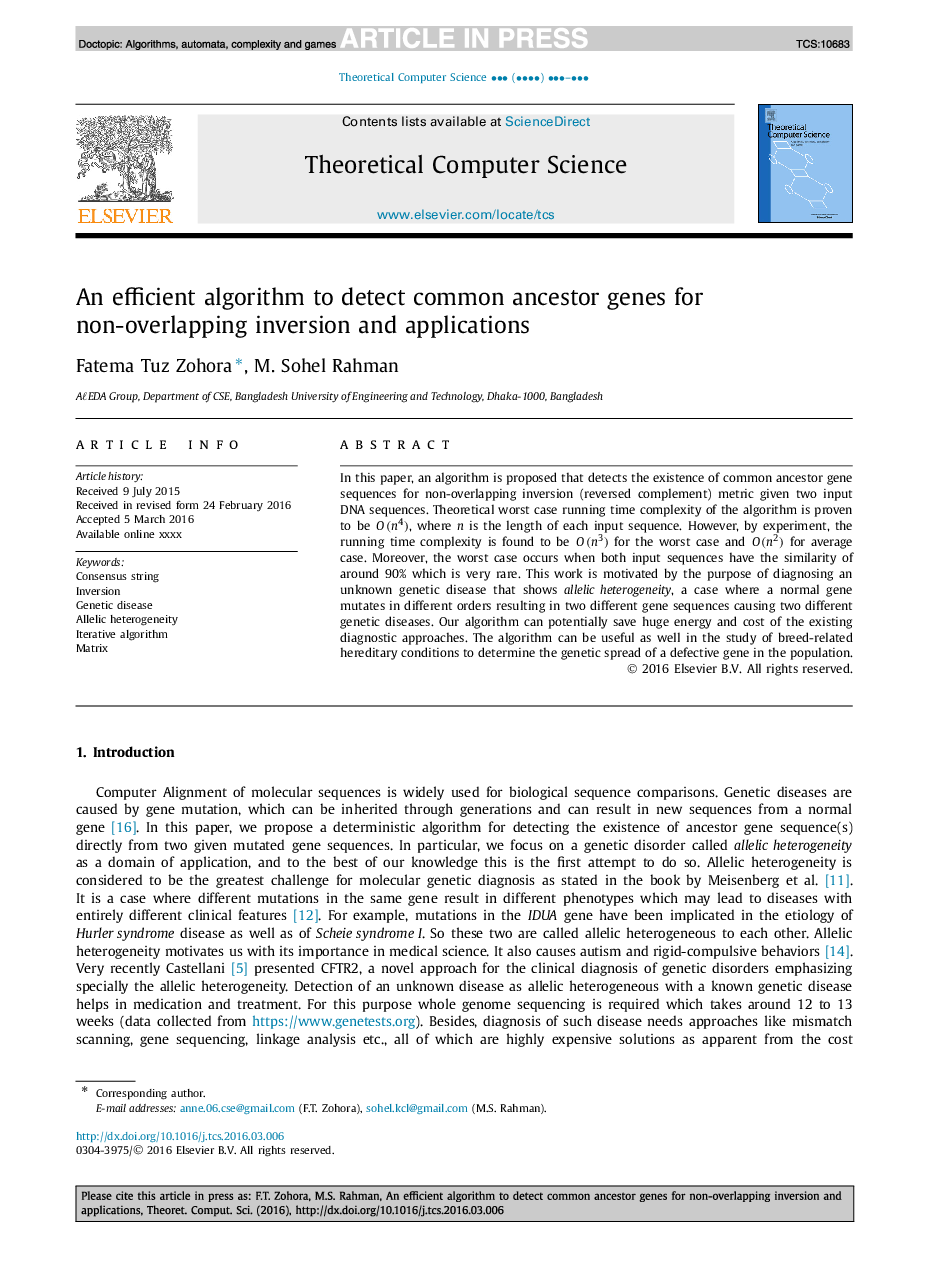| Article ID | Journal | Published Year | Pages | File Type |
|---|---|---|---|---|
| 4952352 | Theoretical Computer Science | 2016 | 27 Pages |
Abstract
In this paper, an algorithm is proposed that detects the existence of common ancestor gene sequences for non-overlapping inversion (reversed complement) metric given two input DNA sequences. Theoretical worst case running time complexity of the algorithm is proven to be O(n4), where n is the length of each input sequence. However, by experiment, the running time complexity is found to be O(n3) for the worst case and O(n2) for average case. Moreover, the worst case occurs when both input sequences have the similarity of around 90% which is very rare. This work is motivated by the purpose of diagnosing an unknown genetic disease that shows allelic heterogeneity, a case where a normal gene mutates in different orders resulting in two different gene sequences causing two different genetic diseases. Our algorithm can potentially save huge energy and cost of the existing diagnostic approaches. The algorithm can be useful as well in the study of breed-related hereditary conditions to determine the genetic spread of a defective gene in the population.
Related Topics
Physical Sciences and Engineering
Computer Science
Computational Theory and Mathematics
Authors
Fatema Tuz Zohora, M. Sohel Rahman,
